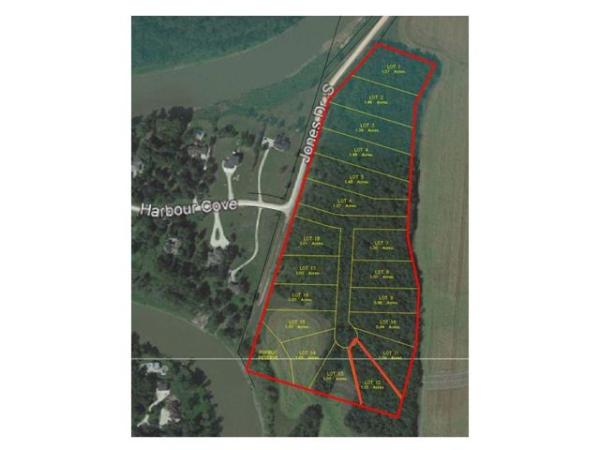The following is a selection of interesting questions I have had from many people in both the Winnipeg area and southern Manitoba.
QUESTION -- The leaves of my Mancana ash dried up this summer, and there are wide openings in the bark. What can I do about this?
ANSWER -- Mancana ash leaves have been infected with ash anthracnose fungus disease. In all situations I have examined this year, the twigs and buds that have been produced are quite healthy, and the tree will grow new leaves if not this year than next year for sure. Have the entire tree sprayed with dormant lime sulfur fungicide next April before the buds open to kill over-wintering fungus spores. Spray the tree again with copper fungicide in June to kill new disease infections from air borne spores. Do two sprayings seven to 10 days apart.
The wide openings on the trunk usually face south and south-west. A number of sources of Mancana ash trees are sensitive to both early and late winter frost damage. Sun scalding in March kills the sensitized cells under the bark along vertical stems. As the tree grows in girth during the spring, these dead areas can not grow with the tree so the bark splits at these locations. The bark dies and falls away in linear patches. The trees' inner wood is exposed to canker fungal diseases especially one called Fusiccocum. This is a disease which can kill parts or the entire tree. Seal the exposed with a wood preservative several times during the summer as well as next year to prevent the wood from drying and splitting allowing the penetration of decay fungus spores. . Have the tree properly fertilized in the fall or next spring to assist growth renewal.
QUESTION -- I put up Tanglefoot bands on all of my trees, but I still got heavy feeding by worms on the leaves. Is Tanglefoot no longer useful?
ANSWER -- Several things could be happening here.
First: Were your bands sufficiently sticky to trap the flightless spring female cankerworm moths? Most bands I saw in the late March to April period this year were dry. It is absolutely important to check the bands after winter for stickiness. If they are not sticky then re-apply Tanglefoot glue immediately. There was a very large hatch this spring of spring cankerworms this year in a number of areas of the city.
Second: If the tops of your trees are in contact or very close to the tops of neighbouring trees, the female moths could easily walk over from the neighbour's trees to lay eggs in yours. This would be true if the neighbour's trees were not banded. Or the worms on your neighbour's trees could crawl over to your trees and have a feast.
Third: Maybe you did not have cankerworms feeding on your tree. The elm span worm does similar feeding damage as cankerworms. Both the female and male moths fly so they would not be trapped by the sticky bands. The moths are pure white and have a wing span of about 2.5 to 3 cm (1 to 1¼ inch) wide. If you noticed many rolled up leaves on the damaged trees look inside the leaf roll. You may see the medium brown pupal case of the span worm. Span worms like canker worms can be controlled with BTK in early spring.
Important: Tanglefoot bands are still an excellent method to control cankerworms. They need to be very sticky and relatively free of insects and leaf litter in the September-October and in April-May periods. If you want to have the bands installed on your trees call Trees Winnipeg (also known as Coalition to Save the Elms) at 775-6642. Place the call now and not in the height of the season when the moths are climbing the trees. There is a heavy rush of tree owners in September who suddenly remember to put up the bands at the last moment.
QUESTION -- My oaks are dying with many leaves turning brown especially in the top half of the tree. What would cause this and is there anything I can do to help the trees?
ANSWER -- Oaks in several areas of Winnipeg especially have been infected by air borne fungal spores of a very complex group of canker diseases principally Cytospora and Phoma. Cytospora is an aggressively lethal disease. Whole trees can die within two years. The diseases are particularly virulent on willows. These diseases affect mature trees that have been stressed. The stress can be through de-icing and anti-icing salt spray near heavily used roads. Construction and heavy compaction will create oak stress leading to these diseases. Even adding a few inches of top soil over the original grade can impact an oak and make it susceptible to canker diseases.
Another problem related to stressed oaks is the active feeding under the bark starting at the top of the tree and working down the tree of the two lined chestnut borer. This is a killing beetle whose populations flare up in the city from time to time.
Both situations need to be properly diagnosed to determine the cause or causes of the stress. Proper fertilization once a year in spring or fall for at least three continuous years helps to slow the down some canker diseases in their early stages of development. Removing properly identified heavily diseased trees as soon as possible is very important in stopping the spread of these diseases. Cytospora canker disease also causes dead branches and needles on spruce, fir, pine and cedar trees. Again heavy infections will kill trees.
Michael Allen is a consulting urban forester and certified I.S.A. arborist and owner of Viburnum Tree Experts. He makes house and garden visits to assess tree and shrub problems. He can be contacted by calling 831-6503 or by e-mail at viburnumtrees@shaw.ca. You can also mail questions to Michael Allen, c/o Newsroom, Winnipeg Free Press, 1355 Mountain Ave., Winnipeg, MB, R2X 3B6.



